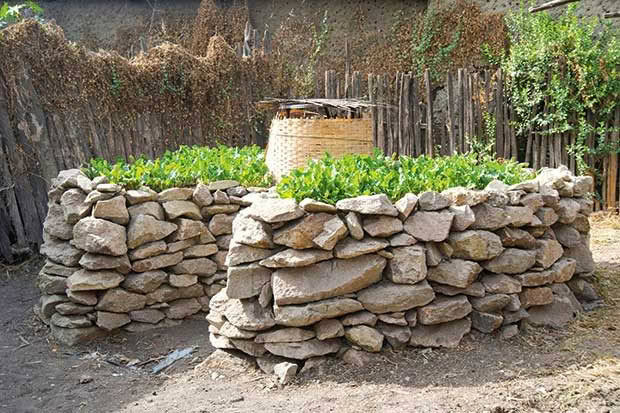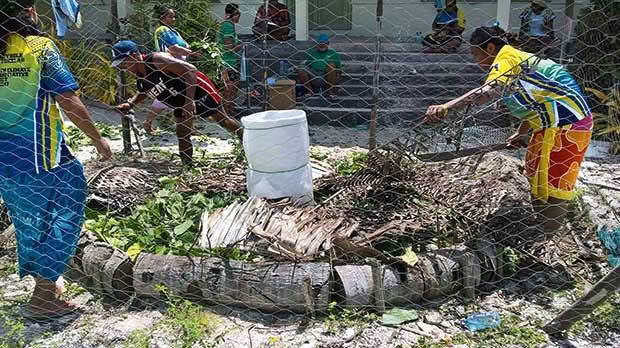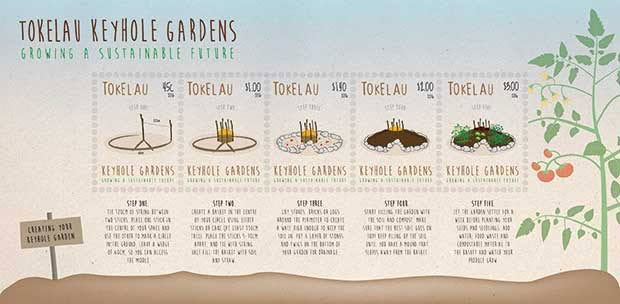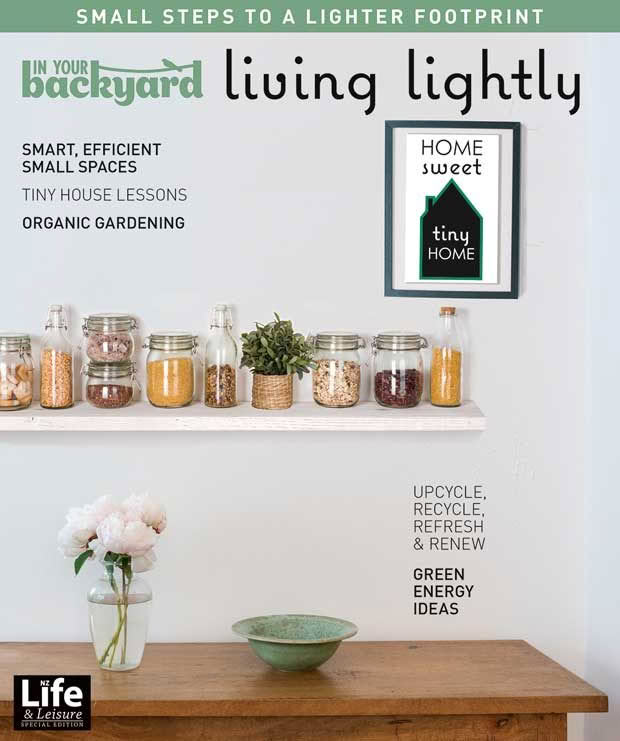Keyhole gardens: How this 1990s garden design is helping farmers combat extreme weather and climate change in the Pacific

Rising temperatures and extreme weather patterns have made gardening difficult in countries in Africa and the Pacific. Keyhole gardens may offer a solution.
Words: Emma Rawson
Keyhole gardens were developed in the 1990s by the CARE relief agency as a drought-resistant solution to growing food.
Due to their success, more than 20,000 gardens have been built around the world and are considered by the United Nations’ Food
and Agriculture Organisation as one answer to combatting malnutrition in nations such as Lesotho, which suffers extreme droughts.
KEY TO SUCCESS
A system of permaculture, keyhole gardens are traditionally circular in shape, about 2m wide and 1m high, and with segments cut out for access.
The garden bed has a drainage foundation of sticks and stones and a central composting basket. The composting system, which is fed food scraps and greywater, retains water and feeds nutrients to the garden.

The garden takes its name from the shape which resembles a keyhole. This allows easy access to crops and the central compost basket.
The garden border tends to consist of rocks or stone (materials such as wicker and wood can also be used, but stone retains moisture and prevents erosion).
The central composting basket is made of chicken wire, sticks, or a strong structure that leaches organic material.

In the face of dramatic climate change, keyhole gardens in Tokelau are helping locals to become more self-sufficient.
CASE STUDY
Sustainable initiatives
Finding solutions to combat climate change is a matter of urgency for the Pacific nation of Tokelau. Tokelau is a dependent territory of New Zealand, made up of three atolls. It is at the frontline of environmental change, experiencing rising temperatures and increasingly frequent storms.
At present, the land is only two metres above sea level at high tide.
In 2011, Tokelau declared a national water emergency, with shortages due to sea levels reducing the freshwater lens (the natural reservoir of fresh water beneath the sand) and evaporation due to heat.

Tokelau postage stamps show a step-by-step guide to creating a keyhole garden.
Tokelau has since kickstarted environmental initiatives that have seen it become the first country in the world to become 100 per cent solar-energy powered. A keyhole garden project funded by the UN Development Programme is helping the 1500 residents
grow their own produce, without depleting water resources.
“Access to fresh vegetables is difficult in Tokelau, due to its isolation in the central Pacific,” says Litia Maiava, a team leader on the project.
“Keyhole gardens have provided Tokelauans the opportunity to grow and eat healthier food, as well as save a lot of water
and money.”
This article appeared in In Your Backyard: Urban Harvest, a special edition of NZ Life & Leisure about growing food in small city spaces. Packed with advice such as how to start a productive veggie garden, the best crops, creating awesome soil, vertical growing, container gardening, hydroponics, espaliered trees and edible hedges.
The latest In Your Backyard edition is available here.


